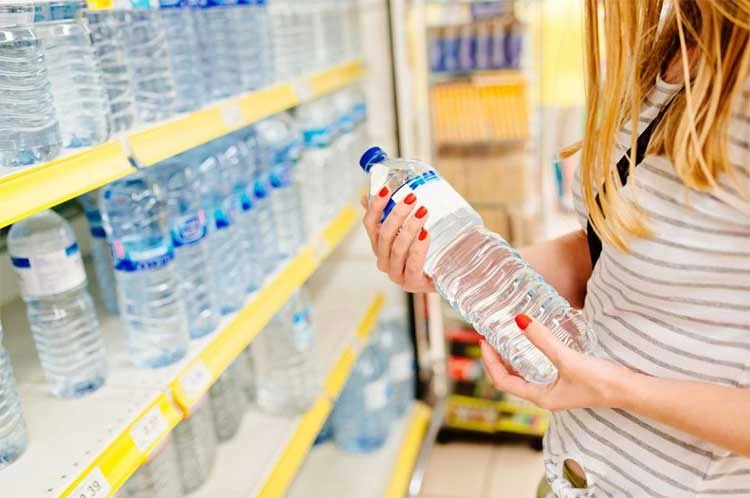Tem No: zh-mb004 Capacity: 250ml 350ml 400ml 500ml 1000ml Material: PET Shape: round Used for: shampoo packaging Place of origin: Shenzhen, China MOQ: 5,000 pieces Unit price range: $0.3-0.6 Sample: available, free, client pay for sample shipping cost
Tem No: ZH-C70244 Capacity: 1L Material: 500ml 2L 4L Used for: detergent liquid bottle Place of origin: Shenzhen, China MOQ: 5,000 pieces Unit price range: $0.32-$0.48 Sample: available, free, client pay for sample shipping cost
Tem No: zh-p9309 Capacity: 2L Material: HDPE Shape: Round Used for: detergant liquid Place of origin: Shenzhen, China MOQ: 5,000 pieces Unit price range: $0.32-$0.48 Sample: available, free, client pay for sample shipping cost
Tem No: zh-c70231 Capacity: 1L Material: HDPE Shape: Round Used for: detergant liquid Place of origin: Shenzhen, China MOQ: 5,000 pieces Unit price range: $0.32-$0.48 Sample: available, free, client pay for sample shipping cost

A Change of the 1990s
I was wondering how this plastic bottle trend started, so I did some research. In short: Nestlé. The company has been under fire for years, from their water permits to contaminate the planet with their bottles, so I decided to figure out why a chocolate company decided to create a water industry. Nestlé started bottling water industry in 1993 named after Aberfoyle Springs. In 2000, they took part in the world water BBS, and persuaded the world water council to change its view that water is not a right, but a need to create a market for bottled water. They also control aquifers to make bottled water more necessary than in past years. The aquifer is the ground where water permeates the rock, where water can be extracted from the well. Essentially, the Nestlé water company has been using the water that humans need to survive.
Once something is classified as a need rather than a right, it will provide us with the supply and demand we need, which brings us to today. Like many other companies, they supply bottled water until we don't need it anymore, and they will continue to sell it.
Play to fear
I think there are a lot of factors at work, and from the media, the water fountains are disgusting, and dirty to the pace that Americans live to catch up with Jones. I asked my family and friends about their disposable water bottles habits, and those who often bought water said it was because of environmental hygiene and convenience. All the diseases we know are there, how clean we need to be, and some people feel they can't trust running water. When you the consumer open the seal, everything is fresher and safer, right? When you Google "contaminated public water", the first thing that comes up is a CDC article. We are taught to be afraid of water.
When we hear about Flint or almost 1 billion people live without a clean, safe drinking water in the story, we used to assume that the use of disposable plastic water bottles is a solution to the problem.
In other words, there are a handful of cases in Flint and the CDC cases. We should not create fear in the campaign. This is what it looks like: a campaign. Companies have been telling people for years that they "need" water. Consider this commercial for contelex by Nestlé:
You would still burn 2,000 calories on a stationary bike drinking free water from the water fountain in the gym. It’s not contaminated and it’s perfectly safe to drink.
In the gym, you can still burn up to 2,000 calories and drink free water from the gym's water fountain. It's not contaminated, and it's safe to drink.
But if you're in the gym, you may have a very busy and fast-paced lifestyle, so you always buy a bottle of water when you're there because it's inexpensive and convenient. Companies like S’well are trying to change the stigma of reusable water bottles, or things you don't have time to carry around. A standard S’well water bottle is $25. Most gyms sell bottled water for $1. If you go to the gym five days a week, you spend $240 a year for the convenience of not carrying a metal one around with you. Is it worth it?
Make Changes
Nestlé is clearly not the only water bottle company that exists. Aquafina was founded in 1994 (PepsiCo), Fiji Water in 1996, Smartwater in 1996 (Coca Cola), Dasani in 2002(Coca Cola company), the list continues.
Water is a right. Don't let anyone tell you it isn't. In most of the United States, you shouldn't spend money on water, especially when our planet is in jeopardy. As a matter of fact, when next time you're thirsty, buy the nearest reusable water bottle, and never pay for a sip of water again.
As a professional China manufacturer of plastic bottles, we will recommend the PCTG plastic water bottles for drinking water, it is plastic material, light weight easy to carry, with food grade and BPA free, the most important thing is that it is large capacity and not breakable. Maybe it's time to start making some changes for our home planet earth.
More information for:
http://earth911.com/business-policy/the-rise-of-the-plastic-bottle/